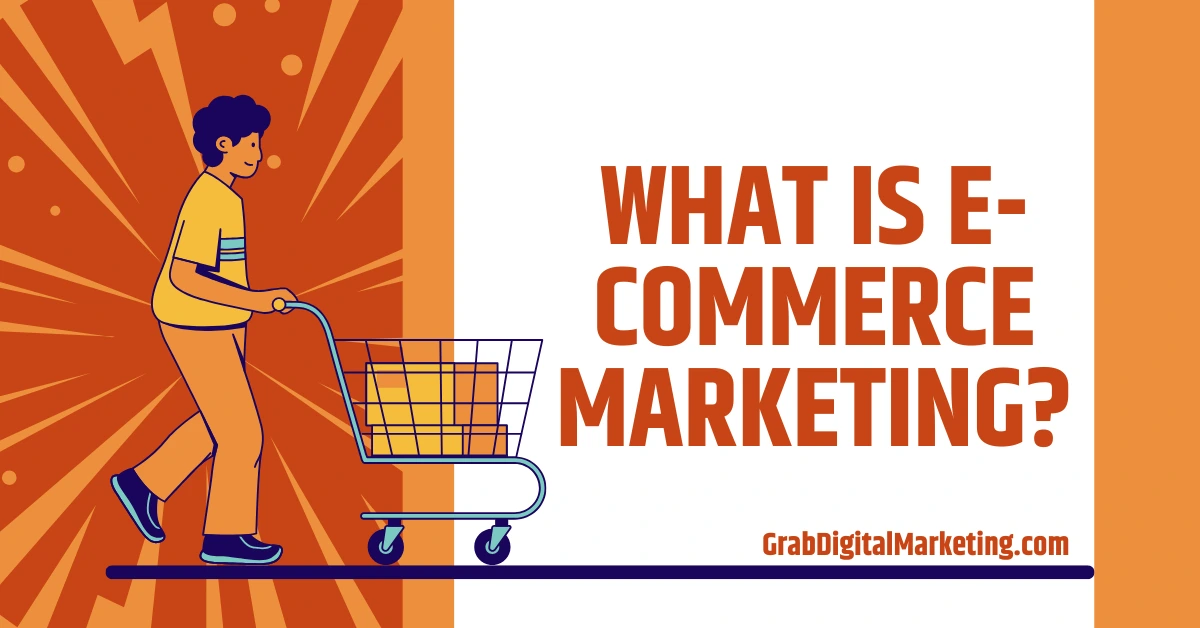E-commerce marketing refers to the tactics and strategies used to promote online stores and drive sales through digital channels. Here’s a thorough exploration of what e-commerce marketing entails:
Table of Contents
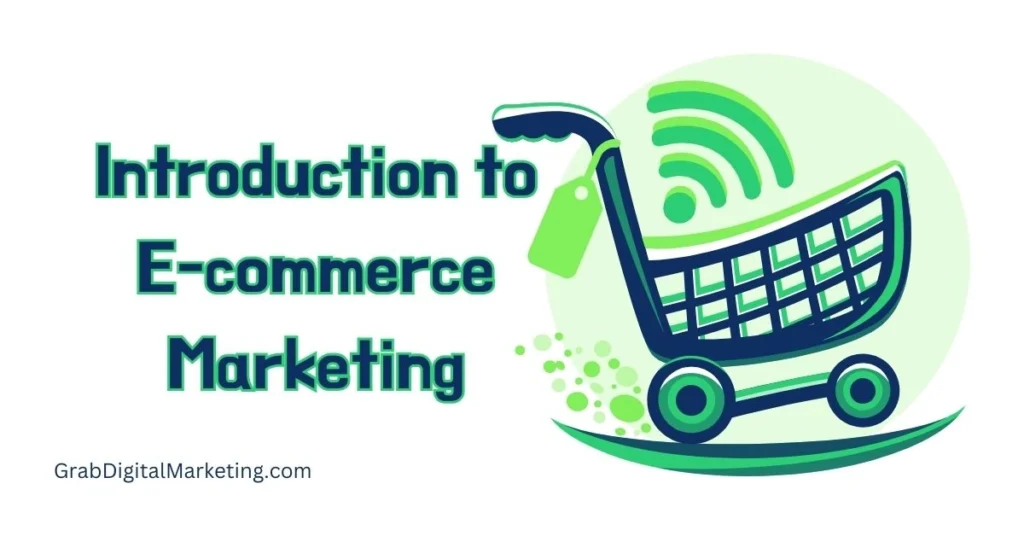
Introduction to E-commerce Marketing
E-commerce marketing combines traditional marketing principles with digital marketing techniques to boost visibility, engagement, and conversions for online businesses. The goal is to attract potential customers to an e-commerce website, retain existing customers, and ultimately drive revenue.
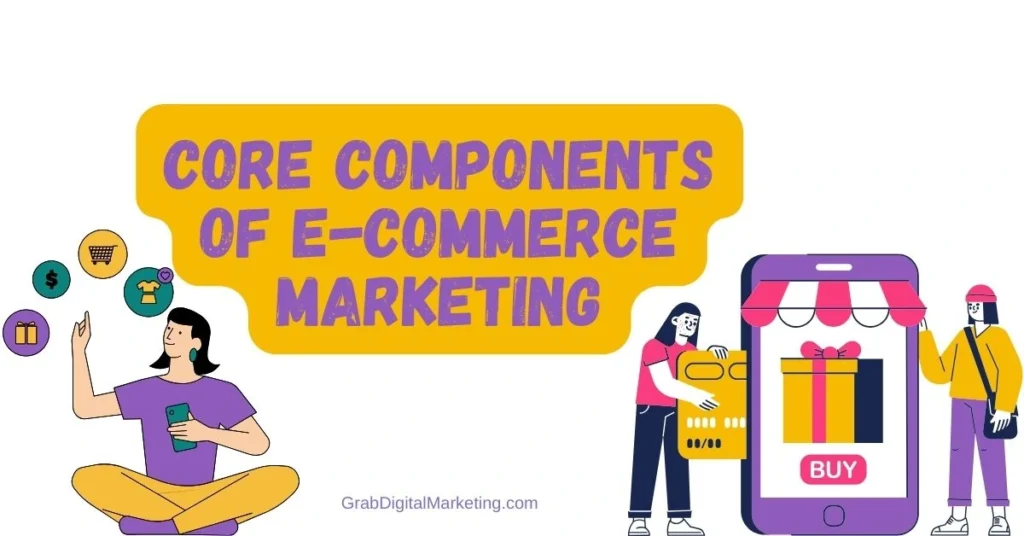
Core Components of E-commerce Marketing
- Search Engine Optimization (SEO)
On-page SEO: Optimizing product pages, descriptions, and metadata with relevant keywords to improve organic search rankings.
Technical SEO: Enhancing website speed, mobile-friendliness, and user experience to meet search engine algorithms.
Content Marketing: Creating blog posts, guides, and product reviews that provide value and drive traffic. - Pay-Per-Click Advertising (PPC)
Google Ads: Running targeted ads on Google’s search and display networks to reach potential buyers.
Social Media Ads: Leveraging platforms like Facebook, Instagram, and Pinterest to run visually appealing ad campaigns. - Email Marketing
Newsletter Campaigns: Sending regular updates, promotions, and product launches to subscribers.
Automated Emails: Triggering emails based on user behavior, such as abandoned cart reminders and post-purchase follow-ups. - Social Media Marketing
Organic Social: Building a brand presence through regular posts, stories, and engagement with followers.
Influencer Partnerships: Collaborating with influencers to reach broader audiences and build credibility. - Content Marketing
Blogs and Articles: Providing valuable content that educates, entertains, and informs customers.
Video Marketing: Creating product demonstrations, tutorials, and unboxing videos to engage viewers. - Affiliate Marketing
Partnering with affiliates who promote products in exchange for a commission on sales.
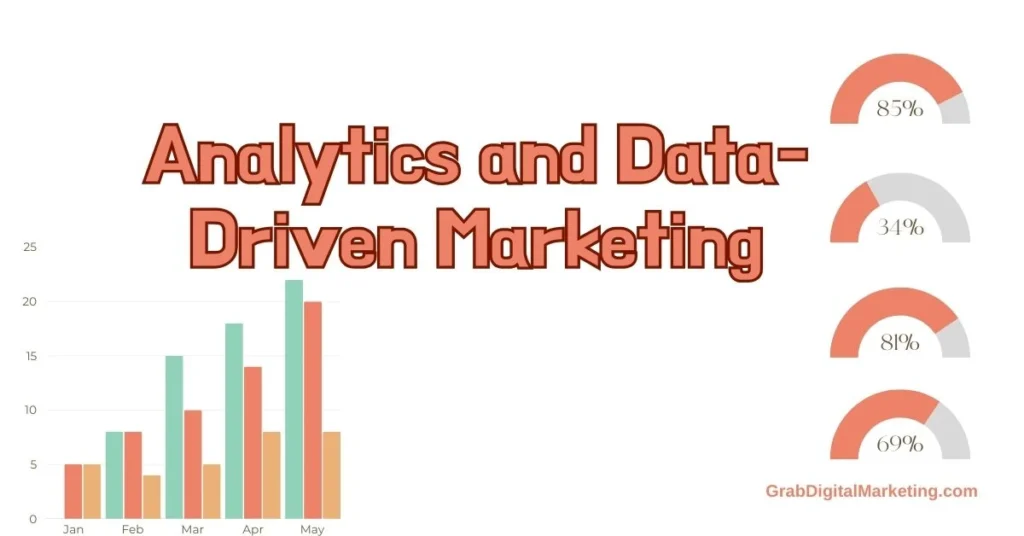
Analytics and Data-Driven Marketing
- Web Analytics
Tools like Google Analytics track user behavior, identify trends and measure campaign performance. - Customer Relationship Management (CRM)
Managing and analyzing customer interactions to enhance retention and loyalty. - A/B Testing
Running experiments to compare different versions of webpages, emails, and ads to determine the most effective approach.
Strategies for E-commerce Marketing Success
- Personalization
Tailoring the shopping experience based on user preferences, behavior, and purchase history. - Omnichannel Marketing
Integrating multiple channels (e.g., website, social media, email) to provide a seamless customer experience. - Mobile Optimization
Ensuring the website is mobile-friendly, as a significant portion of online shopping occurs on mobile devices. - Customer Reviews and Testimonials
Encouraging satisfied customers to leave reviews, can build trust and influence potential buyers. - Retargeting Campaigns
Running ads that target users who have previously visited the website but didn’t make a purchase.
Challenges in E-commerce Marketing
- High Competition
Standing out in a crowded market requires innovative strategies and continuous optimization. - Customer Retention
Keeping customers engaged and loyal in a market where choices are abundant. - Ad Blockers
Navigating the impact of ad blockers on online advertising efforts.
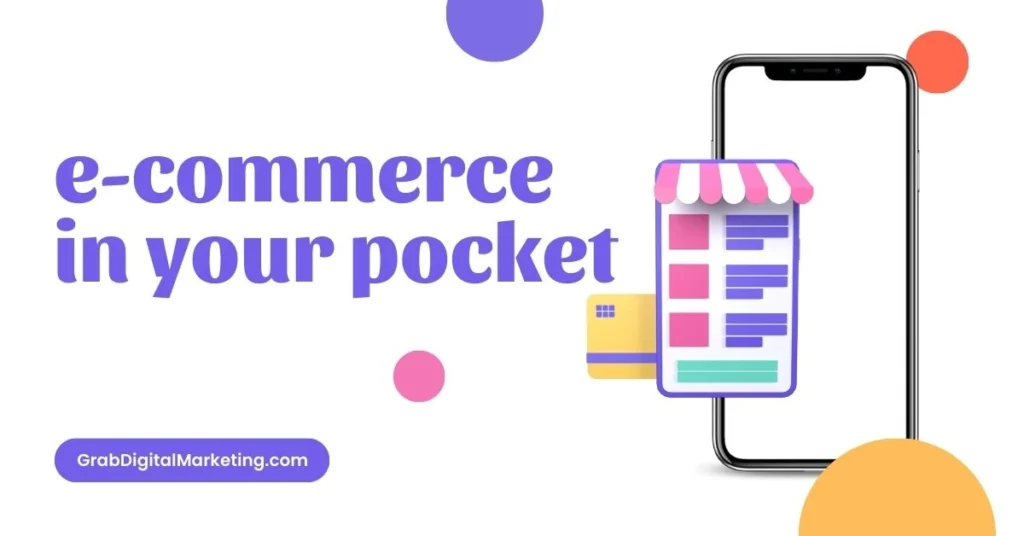
Future Trends in E-commerce Marketing
- Artificial Intelligence and Machine Learning
Utilizing AI for personalized recommendations, chatbots, and predictive analytics. - Voice Search Optimization
Adapting SEO strategies to account for the increasing use of voice-activated devices. - Augmented Reality (AR)
Enhancing the shopping experience with AR, allows customers to visualize products in their environment. - Sustainability and Ethical Practices
Emphasizing eco-friendly products and transparent supply chains to attract conscious consumers.
Case Studies and Success Stories
- Amazon
Leveraging data-driven insights to optimize every aspect of the customer journey, from personalized recommendations to efficient logistics. - Shopify
Empowering small businesses with user-friendly e-commerce platforms and robust marketing tools. - Warby Parker
Combining online and offline experiences with virtual try-ons and brick-and-mortar stores.
Conclusion
E-commerce marketing is a dynamic and evolving field that requires a blend of creativity, technical expertise, and strategic thinking. By harnessing the power of digital channels, businesses can reach and engage a global audience, driving growth and success in the competitive online marketplace.

